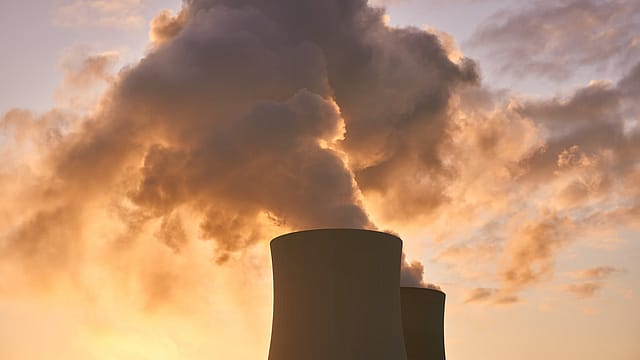The high cost of meeting pollution standards
ADVERTISEMENT

India’s thermal generation sector is weighed down by non-performing assets worth $40 billion-$60 billion, according to a study by Institute for Energy Economics and Financial Analysis (IEEFA), a think tank.
The reasons are many: low-cost tariffs for renewable power (Rs 2.50-Rs 3 per unit vs. Rs 4-Rs 4.50 per unit for thermal); fuel supply; land acquisition issues; outdated technologies; failure to sign power purchase agreements (PPA) with state distribution companies are some of the main ones.
The problem of the coal-fired power plants has been further compounded by a 2015 order from the Ministry of Environment, Forest and Climate Change (MoEFCC), legislating new standards to limit the concentration of sulphur dioxide (SO2), nitrogen oxides (NO2), particulate matter (PM) and mercury (Hg).
The earlier deadline of December 2017 was allowed to die a natural death because no thermal plant had installed the necessary equipment. The new deadline of 2022 too is likely to be missed by many companies because of their inability to pass on the higher cost of generation to the distribution companies. After all, it was only in December 2017 that the Central Electricity Authority published technical guidelines on flue gas desulphurisation, the tech used to remove SO2.
A recent study by the International Institute for Sustainable Development (IISD), Global Subsidies Initiative (GSI), and the Council on Energy Environment and Water (CEEW) called “India’s Energy Transition: The Cost of meeting air pollution standards in the coal-fired electricity sector” shows that the capital expenditure required to install SO2, NO2, and PM pollution-control technology is estimated at Rs 86, 135 crore. And if some old plants are retired by 2027, because of their inability to fix such installations for any reason, then the cost will come down to around Rs 73,176 crore.
December 2025
The annual Fortune 500 India list, the definitive compendium of corporate performance, is out. This year, the cumulative revenue of the Fortune 500 India companies has breached $2 trillion for the first time. Plus, find out which are the Best B-schools in India.
A deeper analysis of the cost for retrofitting flue gas desulphurisation will constitute 81% or Rs 67,416 crore of the total capital requirement, while NO2 control technologies like over-fire air burners account for 16% or Rs 15,430 crore and the electrostatic precipitators for particulate matter accounts for 3% or Rs 3,289 crore.
Hence, installing such pollution-control mechanisms come at a cost. “This will add between 32 paisa and 72 paisaper kilowatt hour to coal- based power plants to their existing tariffs(or around 9% to 21% to their average generation tariff) depending on the size of the units and other factors,” says the report.
The biggest hit or the steepest hike on their tariffs will be faced by the 500MW plants on account of the remaining useful life and more stringent norms. “In most cases, more than 80% of the tariff increase will be in the form of fixed cost and the variable components in all cases add to less than 10 paisa per kwh.”
So why is there such a hue and cry about implementing new environmental norms, which are not only good for public health, but will also help India meets its Paris Climate change mandate? The reason is that coal-fired plant generators, already done in by low capacity utilisation—average 60%—and other issues, are unwilling to make the necessary investment till they get a tariff hike order from the power regulator, the Central Electricity Regulatory Authority (CERC) to show to the distribution companies (discoms). This will help them hike their tariff rates.
Cash-strapped thermal power generators are unwilling to invest on their own funds and are looking at banks to fund such installations. But banks, which have turned risk averse, are unwilling to lend, till they see a signed order of tariff hikes from the regulator.
However, the in-principle approval for costs to be incurred in installing these systems, as sought by various generators, including those by the state-owned National Thermal Power Corporation, have been repeatedly quashed by various regulators, including the CERC. And plants have been asked to approach the Central Regulatory Authority, a statutory body that prescribes the standards on matters such as construction of electrical plants, transmission lines etc.
So the CEA has adopted a case-by-case approach. It is studying each and every thermal power plant and calculating the cost of such installations and other necessary details. While the CEA goes on with its job, while the thermal power plant owner wait.
The Central Electricity Authority (CEA) has identified 177 GW of coal-based utility power plants, which were all commissioned on or before June 2017. The total capacity of coal-based power plants as on March 2019 stands at 194 GW. In the CEA phasing, 166 GW requires retrofitting with flue gas desulphurisation and 66 GW with modifications or enhancements in the electrostatic systems in place.
The IEEFA study, “Seriously Stressed and Stranded: The Burden of Non-Performing Assets in India’s Thermal Power Sector”, says without subsidies from the government, construction of new capacity will be extremely risky and vulnerable.
Forget adding new capacity, according to IEEFA’s most recent report of March 23, 2020, there has been a cancellation of 46 GW of coal-based plants in the past 12 months. Kashish Shah, energy analyst with IEEFA, says: “In the last 12 months to January 2020, 46 GWs of coal-fired power projects were formally or informally cancelled, leaving only 37 GWs under construction.”
